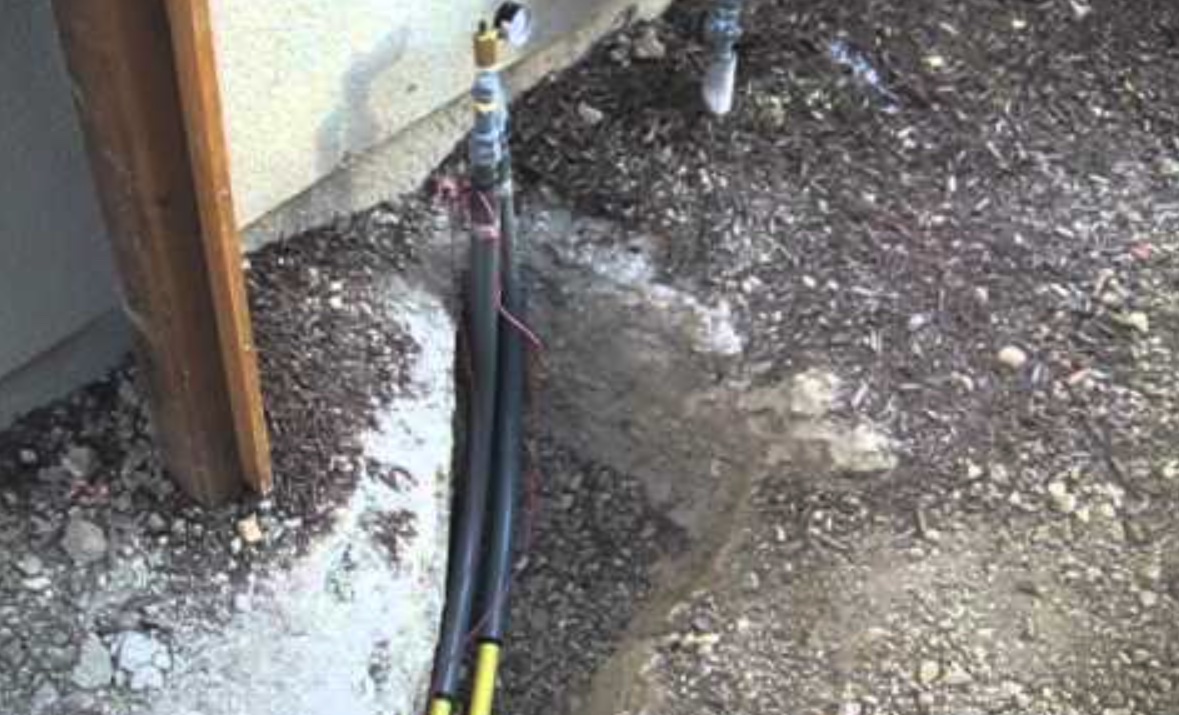How Deep are Gas Lines Buried?
There are several utility lines buried in your property and around it. One of these is the gas lines that supply the gas you use in your kitchen.
Whether you want to install a gas line for a fire pit or are working on your lawn, you should know where these lines are to ensure that you do not hit them while digging.
In addition, knowing how deep the lines are allows you to dig safely without cutting the lines, which can be dangerous. Here is all you need to know about buried natural gas lines.
What is the standard depth in different jurisdictions
- The US buried gas lines are between 18 and 24 inches deep. The main gas lines are 24 inches deep, while the ones close to your house are 18 inches deep. That means if you are digging on your property, you should keep your activities above 18 inches.
- In Canada, gas lines are usually 24 inches deep in traffic areas and 15 inches deep in non-traffic areas. That means if you live in Canada, you should avoid digging deeper than 14 inches if you don’t know where the gas lines on your property are.
- If you live in Australia, gas lines buried in Australia are between 200 and 600 millimeters deep. In high-traffic areas, gas lines are usually deeper than in low-traffic areas. That ensures that the line is not damaged by people driving over a buried gas line.
How to find out where gas lines are buried
Utility lines in the United States are color-coded, and you should not dig within 2 inches of them. If you are planning to dig on your property and do not know where the utility lines are, call 811, and the utility companies will give you the information you need. Companies mark the lines using different colors.
- Gas lines – Yellow
- Electric lines – Red
- Cable TV lines – Orange
- Water lines – Blue
- Sewage lines – Green
Burying your gas lines
If your gas lines are already marked, you can use the key above to find them and avoid digging near them. If you are burying a gas line for your fire pit, ensure you avoid all the other utility lines, not just the gas lines.
- After noting where the utility lines are, start digging a trench where you will lay your gas pipe. Dig the trench and ensure that it is at least 10 inches deep. It does not have to be straight, as the gas pipe is flexible and will not affect its functionality. The trench should connect the area where you plan to have your fire pit and your gas source.
- You will need a ½ inch gas line, and you can buy it at your local hardware store. Make sure you pick a fitting that will work with your chosen lines.
- Since you want to tap the gas you use in the house, shut off the gas source for your safety.
- Disconnect the house gas line at the junction and replace it with a T-junction fitting. That will allow you to split it into two.
- Next, connect the pipes for your fire pit at the T-junction.
- Run the line through the trench you dug to the fire pit and connect the pipe to the fittings on your fire pit.
- Test the new line for leakage. To do that, apply a mixture of water and liquid soap on the new connections and check for bubbles on the seams. If you see bubbles, the line is linking, and you need to improve the connection.
- Finally, cover the line with soil. You can use PVC pipe to shield your new gas line by cutting it in half and placing it over the new line. The pipe will be easy to move for an inspection of the line and will signal anyone who accidentally digs there that there is a pipe. Use a marker like a stone painted yellow to signal that the gas line branches towards the fire pit.
Safe excavation tips when digging around gas lines
It is essential to be careful when digging in your yard. If you puncture a utility line, you could hurt yourself and damage your property, and the repairs may take a very long time. Follow these safety tips when digging near gas pipes and other utility lines.
Visual inspection
Check the area for any signs of utility lines, including utility holes and valve covers. If you see them, it means there are utility lines in the area.
Review plans
If you have a plan for your home, it will indicate where the utility lines are. Avoid digging in those areas.
Call 811
If you do not have plans and cannot see any signs of utility lines, you can call 811 and get information on utility lines from the companies that installed them.
Assume live
Assume all cables are live and avoid digging on them, as you could get hurt.
Insulation
Use insulated tools, and wear rubber gloves and other protective clothing to protect yourself from the risk of an electric shock.
Connecting your fire pit to the natural gas lines in your home will ensure that you do not have to worry about your fire pit going off during a party. Propane gas tanks become depleted after several hours, but natural gas can keep burning for a long time. Remember that connecting your fire pit to your gas line will increase your home’s utility costs. It is, however, a convenient and easy way to fuel your fire pit.


